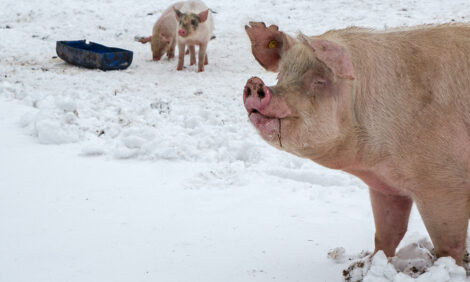



Swine Manure Can Help Boost Crop Yields this Autumn
CANADA - A nutrient management specialist with Manitoba Agriculture, Food and Rural Initiatives reports in-crop applications of liquid swine manure fertiliser can boost crop yields and reduce the workload in the fall when manure is typically applied.
"In-Crop Manure Application" was among the topics discussed earlier this month as part of a field clinic in soil and manure management at the University of Manitoba's Glenlea Research Station, home to the National Centre for Livestock and the Environment.
Clay Sawka, a nutrient management specialist with MAFRI, says liquid manure is generally applied to grass crops at the two- to five-leaf stage when they can tolerate a bit more damage and still have time to bounce back from compaction caused by the implement itself.
Clay Sawka-Manitoba Agriculture, Food and Rural Initiatives:
Typically in Manitoba we see most of the manure being applied in fall.
This puts a lot of pressure on fall work that has to be done.
On top of application we have tillage and harvest so, by spreading the work out across the year, we can lessen some of that pressure in fall and hopefully provide those nutrients to the crop when it requires it.
Some of the risks involved with applying manure late in fall or early in spring is that it's in that shoulder period where there's a chance for a lot of ammonia volatilization losses.
Those nutrients are sort of hanging around there and, if there's a lot of rain or precipitation events in general, those nutrients can be washed away so, by applying in-crop, those nutrients are better available to that crop as it's growing.
We've had reports of up to a 10 per cent increase in yields over the standard fall application of 100 per cent of your nutrients.
These guys are generally putting down starter N with their seed and then topping up with the remaining 100 to 120 pounds of nitrogen and seeing about a 10 per cent bump in yields.
Sawka cautions you have to have the right conditions so the manure doesn't linger around on the surface.
He says if the soil is too wet, you see a little bit more compaction issues and more disturbance from the rolling tines and you want to time application with that two- to five-leaf stage.
For UniversityNews.Org I'm Bruce Cochrane.








